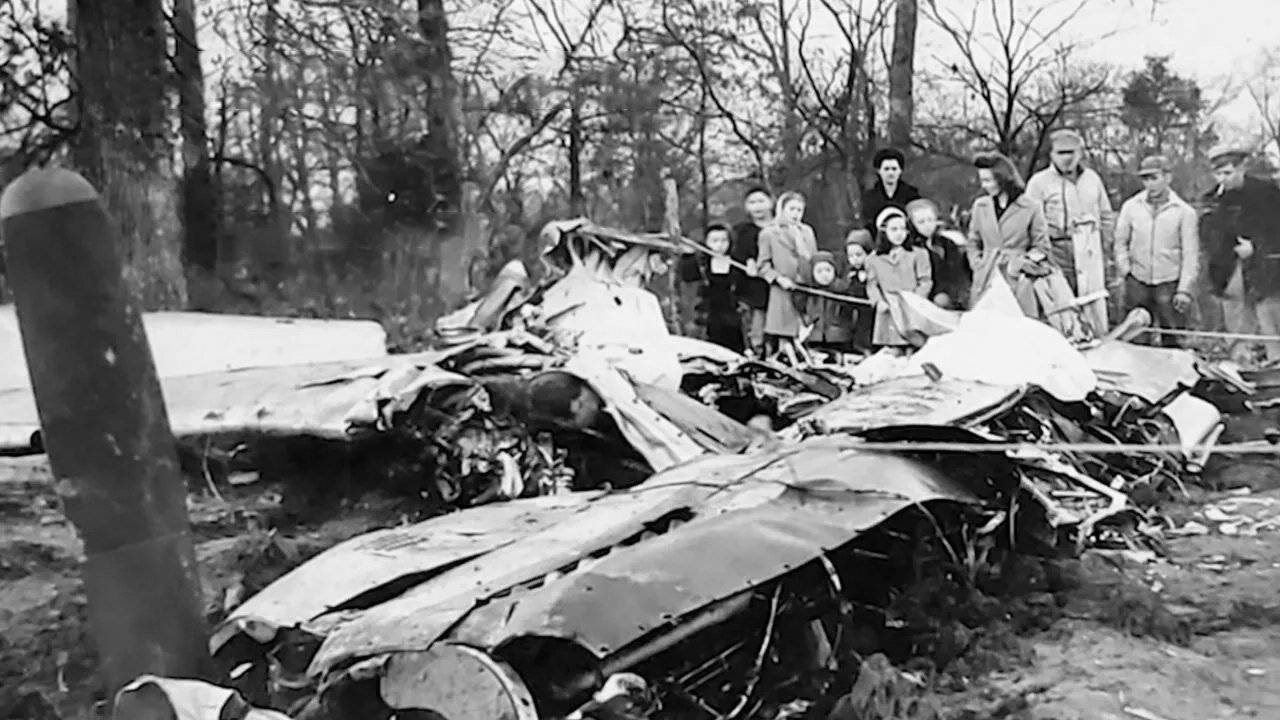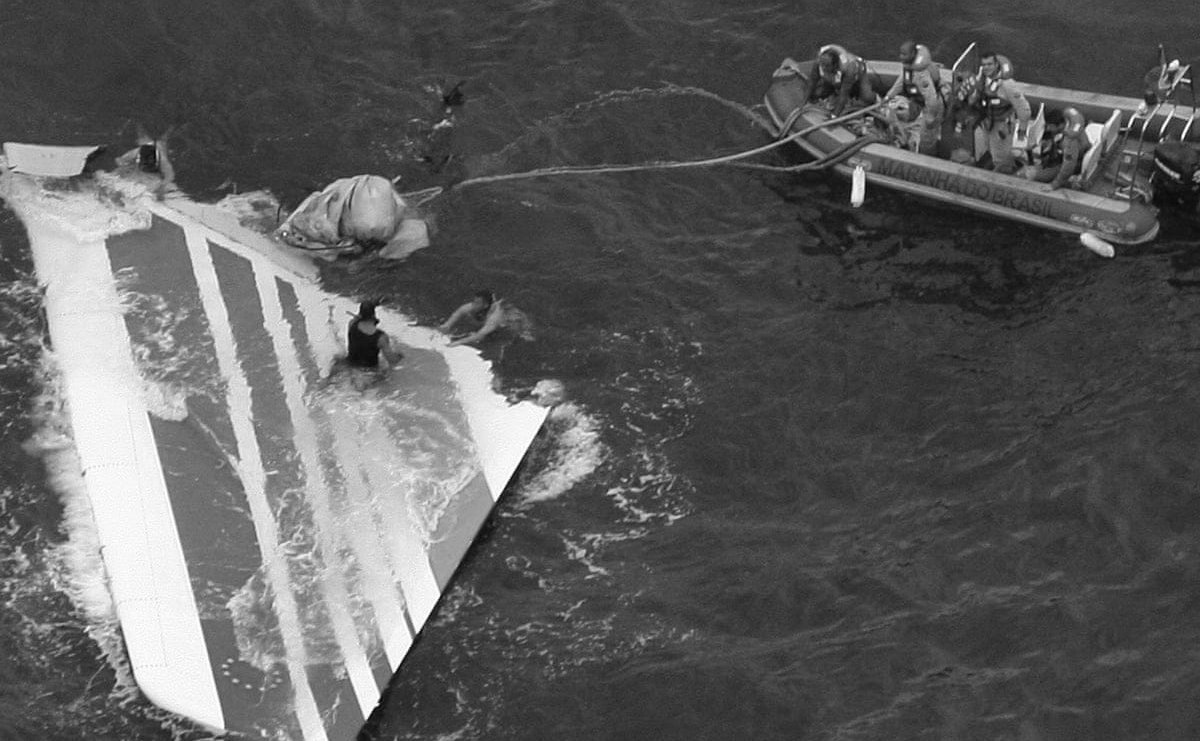Top 10 Unsolved Airplane Mysteries all time
Table of Content
- Amelia Earhart Disappears
- STENDEC mysterious Morse code?
- Was It an Alien Spacecraft (UFO)?
- The Missing H-bomb mystery
- The Vietnam War Casualties
- An Artistic Disappearance mystery
- Mystery of Mechanical Failure or Suicide?
- The Stolen Airliner mystery
- The Ghost Plane mystery
- It was a mistake of Sleepy Pilot?
- Amelia Earhart Disappears

Amelia Earhart, a pioneering American aviator, mysteriously disappeared over the Pacific Ocean on July 2, 1937, during her attempt to circumnavigate the globe. Earhart was already famous for her aviation accomplishments, including being the first woman to fly solo across the Atlantic Ocean in 1932. Her attempt to fly around the world along with her navigator, Fred Noonan, was meant to be her most daring feat yet.
Earhart and Noonan were flying a Lockheed Electra, and their plan was to cover approximately 29,000 miles, mostly following an equatorial route. The most challenging leg of their journey was a flight from Lae, New Guinea, to Howland Island, a tiny, uninhabited sliver of land in the vast Pacific Ocean. This stretch was about 2,556 miles (4,113 kilometers) long, and navigating to such a small target without modern GPS technology was a formidable challenge.
The U.S. Coast Guard cutter Itasca was stationed near Howland Island to provide radio guidance for Earhart as she approached. However, communication problems plagued the effort. Earhart’s last known radio transmission indicated that she and Noonan were flying along a line of position (a navigational technique used to determine location) but could not find the island and were running low on fuel.
Despite an extensive search by the U.S. Navy and Coast Guard, no trace of Earhart, Noonan, or their plane was found. The mystery of their disappearance has spurred numerous theories and expeditions over the years. Some of the most prominent theories include:
- Crash and Sink Theory: This theory suggests that Earhart and Noonan ran out of fuel while searching for Howland Island, causing their plane to crash into the ocean and sink, leaving no trace.
- Gardner Island Hypothesis (Nikumaroro): Some believe that Earhart and Noonan might have landed on Nikumaroro Island (formerly Gardner Island), surviving for a short time as castaways. This theory is supported by some circumstantial evidence, including discovered artifacts that could be linked to Earhart and Noonan, but it has not been definitively proven.
- Capture and Execution Theory: Another theory posits that Earhart and Noonan veered off course and landed in the Japanese-controlled Marshall Islands, where they were captured, taken prisoner, and eventually executed. This theory has been largely discredited due to lack of credible evidence.
- Spy Theory: There are also speculative theories that Earhart’s flight was a cover for a spying mission for the U.S. government, and that her disappearance was either a result of being shot down or captured by the Japanese. This theory also lacks substantial evidence.
Despite numerous investigations and the passage of time, the fate of Amelia Earhart and Fred Noonan remains one of the greatest unsolved mysteries of the 20th century. Interest in their story persists, with new expeditions and research efforts occasionally bringing the case back into the public eye.
- STENDEC mysterious Morse code?

“STENDEC” is a mysterious Morse code message that was transmitted by the British South American Airways (BSAA) Avro Lancastrian airliner Star Dust on August 2, 1947, shortly before the aircraft disappeared over the Andes Mountains. The Star Dust was on a flight from Buenos Aires, Argentina, to Santiago, Chile, when it vanished without a trace. The last communication from the aircraft included the word “STENDEC” sent via Morse code to the Santiago airport control tower. This message was transmitted three times, and each time it was received, the operators at Santiago were puzzled by its meaning.
The disappearance of Star Dust remained a mystery for over 50 years until the wreckage was finally discovered in 1998 on Mount Tupungato. Despite the discovery of the crash site, the meaning of the “STENDEC” message has never been satisfactorily explained. There have been numerous theories and speculations regarding the significance of the message, but none have been universally accepted. Some of the theories include:
- Transcription Error or Misinterpretation: It’s possible that the message was garbled, misheard, or incorrectly transcribed by the radio operator receiving it.
- An Acronym or Code: Some have speculated that “STENDEC” might be an acronym or a code known only to a select few, possibly relating to the flight’s mission or cargo. However, no evidence has supported this theory.
- Phenomenon Related to the Crash: Others have theorized that “STENDEC” could have been a reference to an unexpected situation or phenomenon encountered by the aircraft, possibly related to the weather conditions, navigational difficulties, or the state of the aircraft itself.
- A Navigational Term: There’s speculation that it might be a misunderstood or misspelled navigational term, but no convincing navigational term fitting “STENDEC” has been identified.
Despite the extensive investigation and the eventual discovery of the wreckage, the true meaning of the “STENDEC” message sent by Star Dust remains one of aviation’s enduring mysteries. It adds a layer of intrigue to the tragic accident and serves as a reminder of the challenges and dangers of early commercial aviation.
- Was It an Alien Spacecraft (UFO)?

In January 1948, Captain Thomas F. Mantell, a pilot in the Kentucky Air National Guard, died in a crash while pursuing what he believed was a UFO. The incident occurred on January 7, 1948, and has since become one of the early, widely publicized UFO encounters in the United States, contributing to public interest in UFOs.
Mantell was flying a P-51 Mustang fighter plane when he and other pilots were alerted to an unidentified object flying over Kentucky. Mantell pursued the object, climbing beyond the safe operating altitude for his aircraft without oxygen. Reports indicate that Mantell described the object as large, metallic, and circular, leading to speculation that he was chasing an alien spacecraft.
However, the most widely accepted explanation for the incident is that Mantell was chasing a Skyhook balloon. Skyhook balloons were high-altitude balloons used by the U.S. Air Force for reconnaissance purposes. They were not widely known to the public at the time, contributing to the mystery surrounding the object Mantell pursued. The lack of oxygen at the high altitude likely led to Mantell losing consciousness and ultimately crashing his aircraft.
While some UFO enthusiasts have suggested alternative explanations, including extraterrestrial spacecraft, the evidence supports the conclusion that Mantell’s tragic death resulted from a misunderstanding and the limitations of his aircraft, rather than an encounter with an alien craft. The incident underscored the need for better communication and understanding of aerial phenomena among pilots and helped fuel the growing interest in UFOs in the mid-20th century.
- The Missing H-bomb mystery

The missing H-bomb refers to an incident that occurred on January 17, 1966, known as the Palomares incident. This event involved a mid-air collision between a United States B-52 bomber and a KC-135 tanker over the Mediterranean Sea near the village of Palomares in southern Spain. The collision happened during a routine Cold War-era Airborne Alert Mission, part of Operation Chrome Dome, which involved B-52 bombers being airborne 24/7 as a deterrent against a Soviet attack.
The collision resulted in the deaths of seven crew members (four from the tanker and three from the bomber) and caused the release of four hydrogen bombs. Although none of the bombs detonated, the high explosives in two of the bombs detonated upon impact with the ground, spreading radioactive plutonium contamination over the surrounding area.
Of the four hydrogen bombs, three were found on land near the small fishing village of Palomares. The fourth bomb, however, fell into the Mediterranean Sea, sparking a frantic search. This missing H-bomb led to an extensive, nearly three-month-long search operation involving both the United States and Spain. The bomb was eventually recovered from the seabed on April 7, 1966, at a depth of approximately 2,550 feet (about 780 meters).
The Palomares incident is one of the most serious Broken Arrow incidents in history. “Broken Arrow” is a term used by the U.S. military to describe an accidental event involving nuclear weapons that does not create a risk of nuclear war. The incident led to significant contamination and health concerns for the area, necessitating a cleanup operation and ongoing monitoring. The United States agreed to decontaminate the affected soil and shipped several tons of contaminated soil back to the U.S. for storage.
The incident strained U.S.-Spanish relations and prompted changes in U.S. military procedures for handling nuclear weapons. It also led to increased public scrutiny and concern regarding the safety of nuclear weapons and the policy of airborne alert missions during the Cold War.
- The Vietnam War Casualties

During the Vietnam War, a significant number of U.S. military personnel died in accidents and incidents that occurred outside of Vietnam, even before they could be deployed to the war zone. These casualties happened for various reasons, including training accidents, transportation mishaps, and other non-combat-related incidents. The period of the Vietnam War, particularly from the early 1960s to the mid-1970s, was marked by intense military activity, not only in Southeast Asia but also in the United States and other parts of the world where American forces were stationed or in transit to the combat zone.
Training accidents were among the most common causes of such fatalities. The U.S. military ramped up its training operations to prepare troops for the guerrilla warfare and challenging terrain they would face in Vietnam. This increase in training intensity inevitably led to accidents involving aircraft, vehicles, firearms, and explosives. For example, helicopter pilots and crew members, vital to the new air mobility tactics being developed for use in Vietnam, often faced dangerous training conditions that resulted in crashes and fatalities.
Transportation mishaps also accounted for a significant number of deaths. As troops, equipment, and supplies were constantly moved between the U.S. and Southeast Asia, aircraft and ship accidents occurred with some frequency. The most tragic incidents involved large transport planes, such as the Lockheed C-130 Hercules, crashing due to mechanical failure, bad weather, or human error, resulting in the loss of dozens of lives at a time.
It’s important to note that these incidents were not unique to the Vietnam War; military training and transportation have always carried risks, and accidents have occurred in all major conflicts. However, the scale of the U.S. involvement in Vietnam and the reliance on advanced, sometimes experimental, military tactics and technology led to a notable number of peacetime military casualties during this era.
The names of those who died in such circumstances are not typically included on the Vietnam Veterans Memorial in Washington, D.C., which lists the names of service members who died in the Vietnam War zone. Nonetheless, these individuals made the ultimate sacrifice while serving their country during a time of war, and their deaths highlight the broader human cost of military conflict, extending beyond the battlefield.
- An Artistic Disappearance mystery

An intriguing case of an artistic disappearance that has captivated public imagination is the theft of Johannes Vermeer’s painting “The Concert,” one of the most famous unsolved art thefts in history. This disappearance occurred during the early morning hours of March 18, 1990, at the Isabella Stewart Gardner Museum in Boston, Massachusetts. It wasn’t just “The Concert” that went missing; the heist resulted in the loss of 13 pieces of art collectively valued at around $500 million, making it the largest-value theft of private property in history.
“The Concert” is particularly notable both because of its intrinsic artistic value and because Vermeer’s works are exceedingly rare, with only about 34 paintings attributed to him known to exist. The painting depicts a man and two women performing music and is celebrated for its exquisite detail, composition, and use of light, hallmarks of Vermeer’s masterful technique.
The theft itself was audacious and startlingly simple: two men dressed as police officers gained entry to the museum by claiming they were responding to a call. Once inside, they overpowered the security guards and spent approximately 81 minutes in the museum, taking their time to select the pieces they removed. Along with “The Concert,” the thieves took works by Rembrandt, Degas, and Manet, among others.
Despite a massive investigation by the FBI and the offer of a substantial reward for information leading to the recovery of the stolen items, none of the art has been recovered, and the case remains unsolved. The mystery of who was behind the theft and what motivated them—whether it was a commissioned theft, an attempt to use the artworks as collateral in criminal dealings, or simply a bid to possess such masterpieces—continues to baffle experts and law enforcement.
The empty frames from which the artworks were cut still hang in the Isabella Stewart Gardner Museum as a reminder of the loss and a symbol of hope for their eventual return. The museum maintains an active interest in any leads that could result in the recovery of the stolen works, including “The Concert,” and the case remains one of the art world’s most enduring mysteries.
- Mystery of Mechanical Failure or Suicide?

Egypt Air Flight 990, a Boeing 767, crashed into the Atlantic Ocean on October 30, 1999, approximately 60 miles south of Nantucket Island, Massachusetts, killing all 217 people on board. The flight was a regularly scheduled international passenger service from Los Angeles to Cairo, with a stop at John F. Kennedy International Airport in New York. The tragedy sparked an international controversy, primarily between the United States and Egypt, over the cause of the crash.
The U.S. National Transportation Safety Board (NTSB) led the investigation into the crash, with the participation of the Egyptian Civil Aviation Authority (ECAA) as representatives of the state of the aircraft’s registry and the state of the operator. After an extensive investigation, the NTSB concluded that the probable cause of the crash was the airplane’s departure from normal cruise flight and subsequent impact with the Atlantic Ocean as a result of the relief first officer’s flight control inputs. The report suggested that the relief first officer’s actions were deliberate, effectively categorizing the incident as a case of suicide.
The NTSB’s findings were based on the analysis of the flight data recorder (FDR) and cockpit voice recorder (CVR), which indicated that the relief first officer repeated the phrase “I rely on God” several times before the airplane began its rapid descent into the ocean. The captain, who was not in the cockpit at the beginning of the incident, was recorded trying to regain control of the aircraft.
The Egyptian authorities, however, rejected the NTSB’s conclusion, proposing an alternative theory that the crash was caused by a mechanical failure of the airplane’s elevator control system. They argued that there was no conclusive evidence to support the theory of a deliberate act by the relief first officer and that all possible mechanical causes had not been thoroughly excluded.
The disagreement between the NTSB and the ECAA over the cause of the crash led to a significant international controversy. The differing conclusions highlighted the challenges in aviation accident investigations involving potential pilot suicide, including the interpretation of evidence, the consideration of cultural sensitivities, and the impact of such findings on the families of those involved and the reputation of the airline.
As a result of this tragedy and others, there have been calls for improved mental health screening and support for pilots, as well as enhanced security measures and cockpit procedures to prevent unauthorized control of an aircraft.
- The Stolen Airliner mystery

In May 2003, a Boeing 727-223, registered as N844AA, was involved in a mysterious incident where it was stolen from Quatro de Fevereiro Airport in Luanda, Angola. This event sparked a worldwide search and led to widespread speculation and concern due to the post-9/11 climate and the potential for the aircraft to be used in a terrorist attack.
The aircraft, owned by a Florida-based leasing company, was being leased by TAAG Angola Airlines. It had been sitting idle for some time at the airport and had been accruing parking fees. The plane was reportedly in need of significant maintenance, including engine overhauls, and was not in an airworthy condition without significant work. On May 25, 2003, the aircraft took off without clearance or communication with the control tower. The plane was last observed heading out over the Atlantic Ocean, and its transponder was turned off, making it invisible to civilian radar.
The man believed to be at the controls was an American pilot and flight engineer named Ben Charles Padilla. Padilla and a Congolese assistant were the only two people believed to be on board when the aircraft disappeared. There has been much speculation about Padilla’s intentions and capabilities, including whether he intended to steal the aircraft for his own purposes, was somehow coerced, or was planning to deliver it to another party. His exact fate, as well as that of his assistant and the aircraft, remains unknown.
The disappearance of the Boeing 727 prompted an international search and investigation, involving multiple governments and agencies, including the FBI and the CIA. Despite these efforts, the aircraft was never found, and no definitive explanation for its theft and subsequent disappearance has been provided. The incident remains one of the most intriguing aviation mysteries of the early 21st century.
Theories about what happened to the aircraft have ranged from it being used for illegal activities such as drug trafficking or smuggling, to the possibility of it being repurposed or scrapped for parts. However, without concrete evidence or the discovery of the aircraft, the true story behind its disappearance and the fate of those on board remains a matter of speculation.
- The Ghost Plane mystery

Helios Airways Flight 522, often referred to as the “Ghost Plane,” was involved in a tragic incident on August 14, 2005. The Boeing 737-300 was on a scheduled passenger flight from Larnaca, Cyprus, to Prague, Czech Republic, with a stopover in Athens, Greece. The flight carried 115 passengers and 6 crew members, but it never reached its intended destination. Instead, it crashed into a hillside near Grammatiko, Greece, approximately 40 kilometers (25 miles) north of Athens, killing all 121 people on board.
The sequence of events leading to the crash began shortly after takeoff. The aircraft experienced a loss of cabin pressure, which led to hypoxia (oxygen deprivation) for everyone on board. The aircraft’s oxygen masks deployed, but the supply from the drop-down units in the passenger cabin lasts only about 15 minutes, and it’s believed that the crew and passengers lost consciousness due to lack of oxygen before they could take any corrective action.
A critical factor in the accident was a miscommunication and misunderstanding regarding the aircraft’s pressurization system. The investigation concluded that the aircraft’s pressurization mode selector was left in the manual position, preventing the automatic pressurization of the cabin as the aircraft ascended. Additionally, several alarms and warnings, including a takeoff configuration warning horn that also serves as a warning for cabin pressurization issues, were misinterpreted by the flight crew.
As the unresponsive plane flew on autopilot, it entered Greek airspace, prompting the Hellenic Air Force to scramble fighter jets to intercept. The fighter pilots reported seeing the co-pilot slumped over the controls and passengers apparently unconscious. Eventually, after running out of fuel, the aircraft crashed.
The Helios Airways Flight 522 incident is one of the deadliest aviation accidents in Greek history and led to significant changes in aviation safety procedures, including improvements in crew training on cabin pressurization systems and the use of emergency oxygen systems. It also served as a somber reminder of the importance of clear communication and understanding of aircraft systems among flight crews.
- It was a mistake of Sleepy Pilot?

Air France Flight 447 tragically disappeared over the Atlantic Ocean on June 1, 2009, while en route from Rio de Janeiro, Brazil, to Paris, France. The Airbus A330-203 carried 228 passengers and crew members, all of whom perished in the accident. The disappearance of Flight 447 and the subsequent search for the wreckage and black boxes captured global attention, drawing comparisons to other aviation mysteries, including the later disappearance of Malaysia Airlines Flight 370 in 2014. However, the causes of the two incidents are distinct, and in the case of Flight 447, pilot fatigue was not identified as the primary factor.
The investigation into the crash of Flight 447, led by the French Bureau of Enquiry and Analysis for Civil Aviation Safety (BEA), revealed a complex chain of events leading to the disaster. The aircraft encountered a high-altitude thunderstorm in the Intertropical Convergence Zone (ITCZ) and suffered from iced-over pitot tubes, which are crucial for measuring airspeed. This led to inconsistent airspeed readings and caused the autopilot to disconnect, handing control over to the pilots under challenging conditions.
The BEA’s final report highlighted several factors contributing to the accident, including:
- Inconsistent Airspeed Readings: The icing of the pitot tubes led to unreliable airspeed data, which contributed to the autopilot disconnecting.
- Pilot Response: The pilots’ handling of the aircraft after the autopilot disconnection and their reaction to the stall warnings were critical factors. The investigation found that the pilots did not apply the appropriate procedures for handling the aircraft at high altitude after the loss of reliable airspeed indications.
- Stall: The aircraft entered a prolonged stall from which it did not recover. The report noted that the pilots failed to recognize the stall situation timely and did not take corrective actions that could have recovered the aircraft.
- Training and Procedures: The report also pointed to deficiencies in training and procedures for dealing with high-altitude stalls and unreliable airspeed indications.
While fatigue can impair performance and has been a contributing factor in other aviation accidents, the investigation into Flight 447 did not single out pilot fatigue as a primary cause. Instead, it focused on the sequence of technical failures and pilot actions under duress. The tragedy led to several recommendations for improvements in aircraft systems, pilot training, and international regulations concerning flight recorders and locator beacons to enhance aviation safety and prevent similar accidents in the future.

